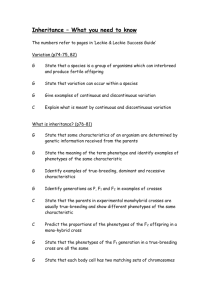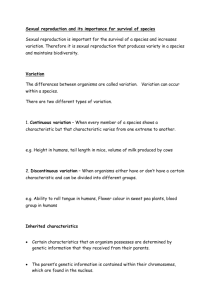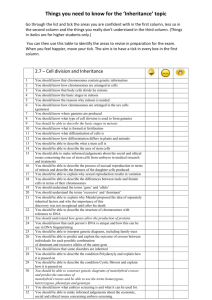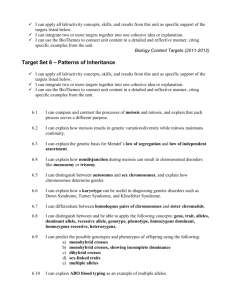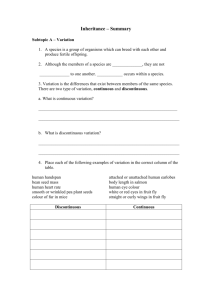Standard Grade biology Learning outcomes
advertisement
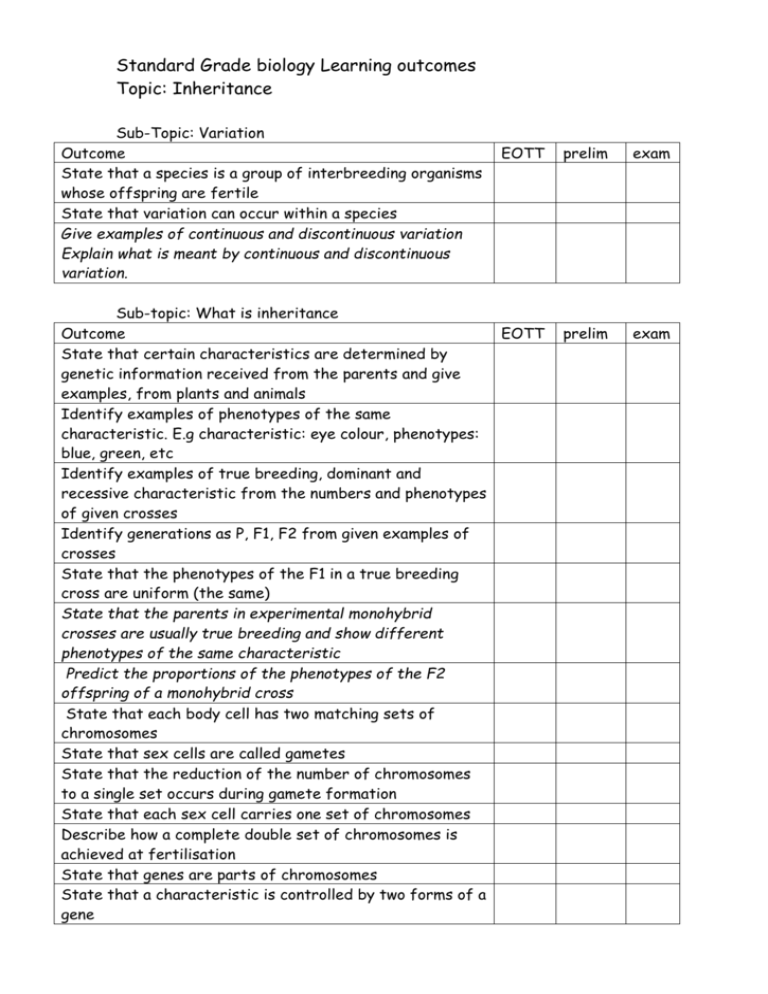
Standard Grade biology Learning outcomes Topic: Inheritance Sub-Topic: Variation Outcome State that a species is a group of interbreeding organisms whose offspring are fertile State that variation can occur within a species Give examples of continuous and discontinuous variation Explain what is meant by continuous and discontinuous variation. EOTT Sub-topic: What is inheritance Outcome EOTT State that certain characteristics are determined by genetic information received from the parents and give examples, from plants and animals Identify examples of phenotypes of the same characteristic. E.g characteristic: eye colour, phenotypes: blue, green, etc Identify examples of true breeding, dominant and recessive characteristic from the numbers and phenotypes of given crosses Identify generations as P, F1, F2 from given examples of crosses State that the phenotypes of the F1 in a true breeding cross are uniform (the same) State that the parents in experimental monohybrid crosses are usually true breeding and show different phenotypes of the same characteristic Predict the proportions of the phenotypes of the F2 offspring of a monohybrid cross State that each body cell has two matching sets of chromosomes State that sex cells are called gametes State that the reduction of the number of chromosomes to a single set occurs during gamete formation State that each sex cell carries one set of chromosomes Describe how a complete double set of chromosomes is achieved at fertilisation State that genes are parts of chromosomes State that a characteristic is controlled by two forms of a gene prelim exam prelim exam State that different forms of a gene are called alleles State that each parent contributes one of the two forms of the gene State that each gamete carries one of the two forms of the gene State the meaning of the word genotype Explain monohybrid crosses in terms of genotypes Explain differences between observed and prediced figues in monohybrid crosses State that the sex of a child is determined by specific chromosomes called X and Y chromosomes State that in humans each male gamete may have an X or a Y chromosomes while each female gamete has an X chromosome. Explain how the sex of a child is determined with reference to X and Y chromosomes. Sub-topic: Genetics and society Outcome Give two examples of an improved characteristic resulting from selective breeding e.g. increased yield, increased disease resistance, or increased growth Describe two examples, one plant, one animal, of the enhancement of a characteristic through selective breeding Describe one example of a human condition caused b y a chromosome mutation, e.g Down’s syndrome Give an example of a chromosome mutation, advantageous to man, in a plant or animal of economic importance State that amniocentesis can be used to detect chromosome characteristic before birth. Give an example of a factor which can influence the rate of mutation in an organism. EOTT prelim exam
